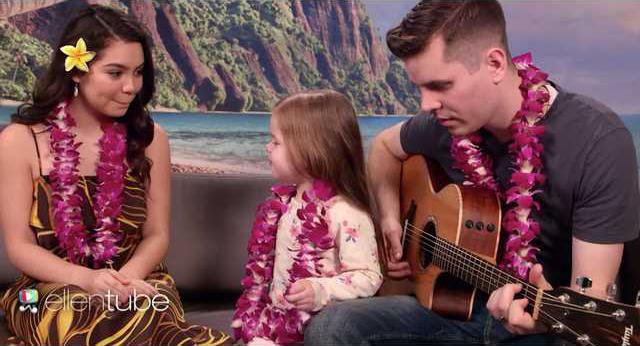After Disney released the animated film Moana, thousands of YouTubers have covered the song How far Ill go, originally sung by Aulii Cravalho. There are hundreds of different voices and styles, each YouTuber covering with their own personal flair, but we have collected some of the most interesting performances here.
Claire Crosby, an adorable four-year-old and YouTube sensation, recently sang the song with the voice behind the original Moana, Aulii Cravalho, as Claires dad strummed the guitar.
The most popular cover on YouTube is a more beat-centered version of the song by Diamond White and Kurt Schneider.
The other Disney princesses added their own anthems (like Mulans Reflection and Cinderellas A Dream is a Wish your Heart Makes) to Moanas classic song in this mash-up.
Nick Pitera managed to hit all the high notes in the song with his falsetto, an impressive feat.
The original song is written from Moanas perspective but Jonathan Young covered the song in third person, for example, She has been standing at edge of the water, instead of the original Ive been standing at the edge of the water.
Normally forgetting the lyrics to the song youre covering is a no-no, but in the case of this darling 3-year-old, it just makes the video more unique.
And of course, Aulii Cravalhos performance at the Oscars, accompanied by an impressive rap-style intro by Lin Manuel Miranda, is not to be forgotten.
Claire Crosby, an adorable four-year-old and YouTube sensation, recently sang the song with the voice behind the original Moana, Aulii Cravalho, as Claires dad strummed the guitar.
The most popular cover on YouTube is a more beat-centered version of the song by Diamond White and Kurt Schneider.
The other Disney princesses added their own anthems (like Mulans Reflection and Cinderellas A Dream is a Wish your Heart Makes) to Moanas classic song in this mash-up.
Nick Pitera managed to hit all the high notes in the song with his falsetto, an impressive feat.
The original song is written from Moanas perspective but Jonathan Young covered the song in third person, for example, She has been standing at edge of the water, instead of the original Ive been standing at the edge of the water.
Normally forgetting the lyrics to the song youre covering is a no-no, but in the case of this darling 3-year-old, it just makes the video more unique.
And of course, Aulii Cravalhos performance at the Oscars, accompanied by an impressive rap-style intro by Lin Manuel Miranda, is not to be forgotten.








